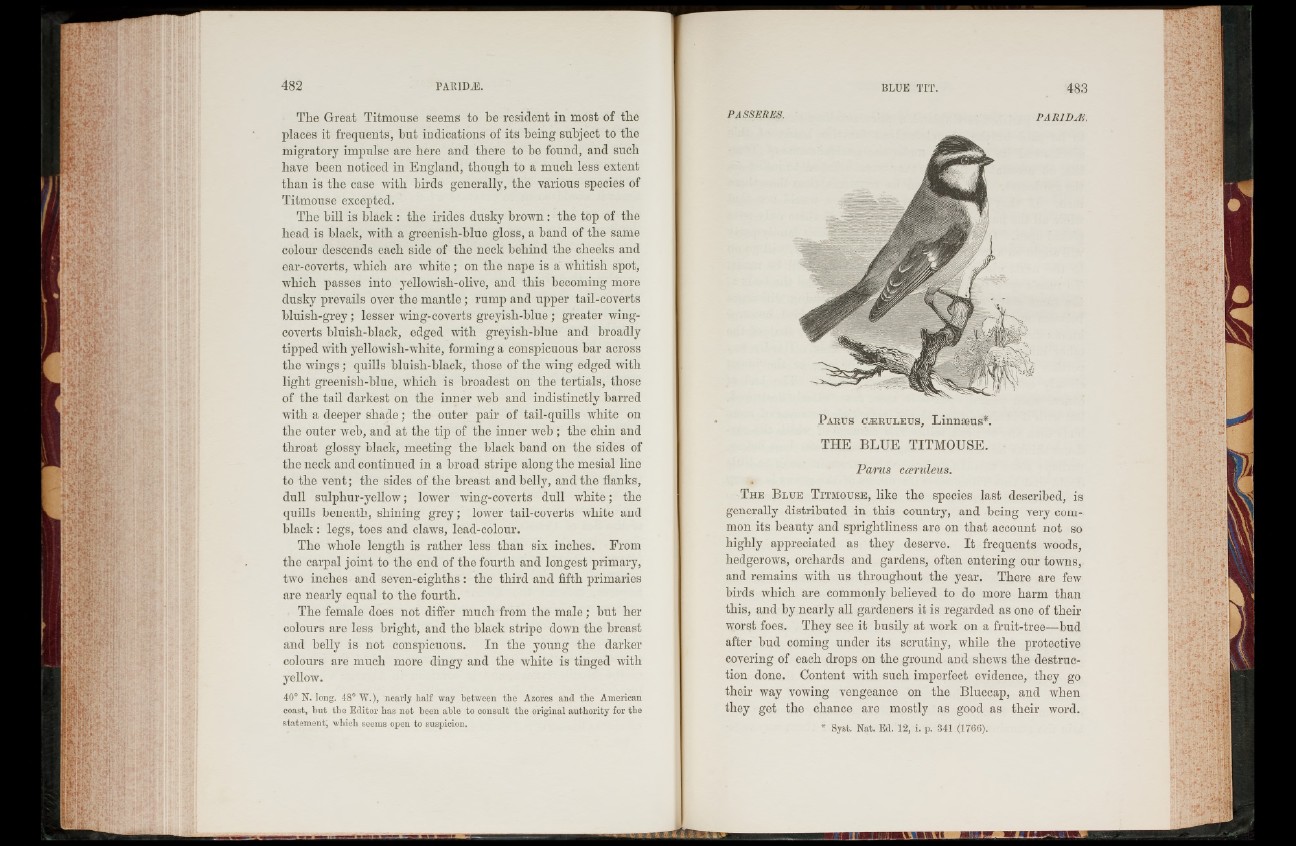
The Great Titmouse seems to be resident in most of the
places it frequents, but indications of its being subject to the
migratory impulse are here and there to be found, and such
have been noticed in England, though to a much less extent
than is the case with birds generally, the various species of
Titmouse excepted.
The hill is black : the irides dusky brown : the top of the
head is black, with a greenish-blue gloss, a band of the same
colour descends each side of the neck behind the cheeks and
ear-coverts, which are white; on the nape is a whitish spot,
which passes into yellowish-olive, and this becoming more
dusky prevails over the mantle; rump and upper tail-coverts
bluish-grey; lesser wing-coverts greyish-blue ; greater wing-
coverts bluish-black, edged with greyish-blue and broadly
tipped with yellowish-white, forming a conspicuous bar across
the wings; quills bluish-black, those of the wing edged with
light greenish-blue, which is broadest on the tertials, those
of the tail darkest on the inner web and indistinctly barred
with a deeper shade; the outer pair of tail-quills white on
the outer web, and at the tip of the inner web; the chin and
throat glossy black, meeting the black hand on the sides of
the neck and continued in a broad stripe along the mesial line
to the vent; the sides of the breast and belly, and the flanks,
dull sulphur-yellow; lower wing-coverts dull white; the
quills beneath, shining grey; lower tail-coverts white and
black: legs, toes and claws, lead-colour.
The whole length is rather less than six inches. From
the carpal joint to the end of the fourth and longest primary,
two inches and seven-eighths: the third and fifth primaries
are nearly equal to the fourth.
The female does not differ much from the male; hut her
colours are less bright, and the black stripe down the breast
and belly is not conspicuous. In the young the darker
colours are much more dingy and the white is tinged with
yellow.
40° N. long. 48° W.), nearly half way between the Azores and the American
coast, but the Editor has not been able to consult the original authority for the
statement; which seems open to suspicion.
P a ru s c.e r u l e u s , Linnaeus*.
THE BLUE TITMOUSE.
Parus cceruleus.
T h e B l u e T itm o u s e , like the species last described, is
generally distributed in this country, and being very common
its beauty and sprightliness are on that account not so
highly appreciated as they deserve. I t frequents woods,
hedgerows, orchards and gardens, often entering our towns,
and remains with us throughout the year. There are few
birds which are commonly believed to do more harm than
this, and by nearly all gardeners it is regarded as one of their
worst foes. They see it busily at work on a fruit-tree-—hud
after bud coming under its scrutiny, while the protective
covering of each drops on the ground and shews the destruction
done. Content with such imperfect evidence, they go
their way vowing vengeance on the Bluecap, and when
they get the chance are mostly as good as their word.
* Syst. Nat. Ed. 12, i. p. 341 (1766).
. G
i.
-1 J;